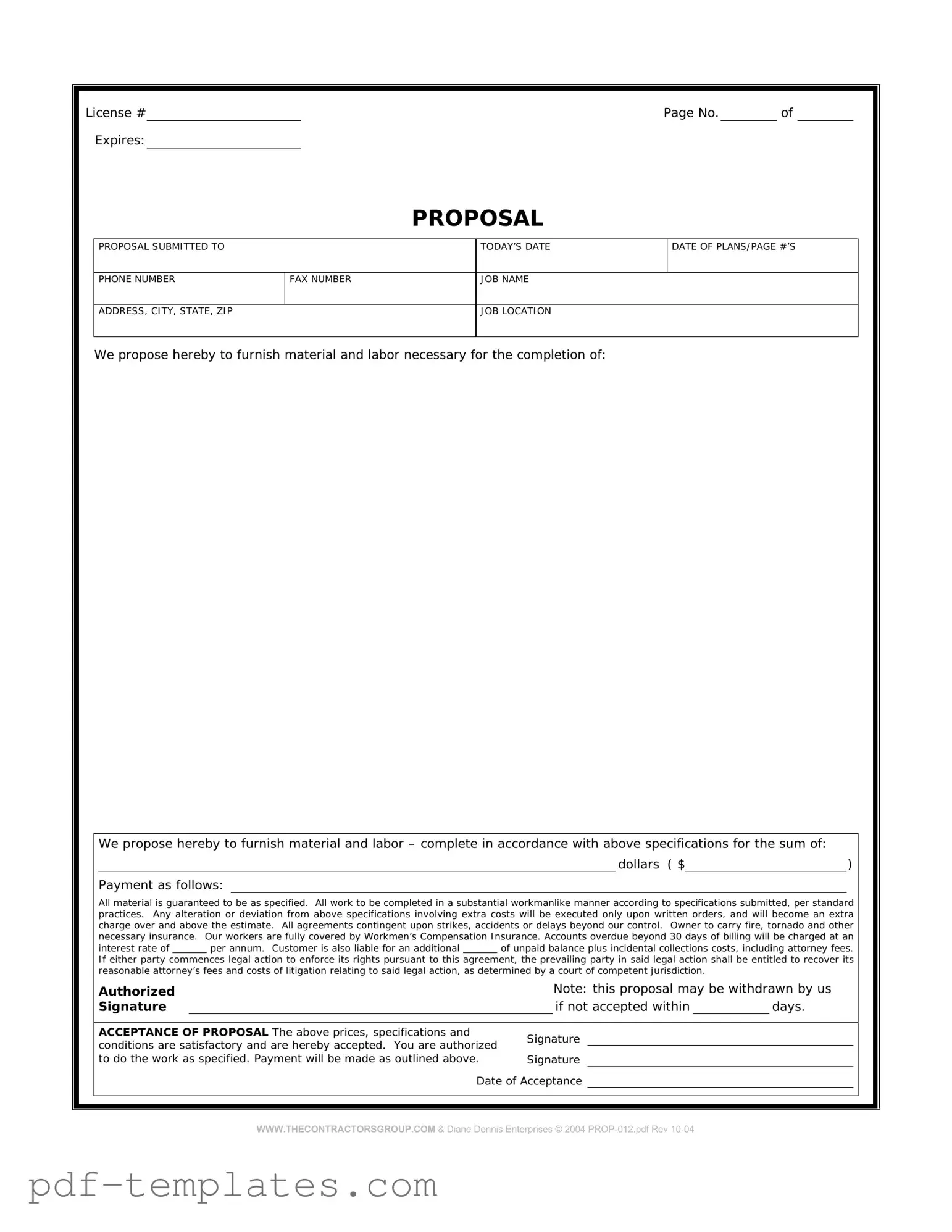The construction contract is similar to the construction proposal form in that both documents outline the terms and conditions of a construction project. A construction contract is a legally binding agreement that specifies the responsibilities of each party involved, including the scope of work, timelines, and payment schedules. Like the proposal form, it serves as a foundational document to ensure all parties understand their obligations and expectations. However, the contract is typically more detailed and formal, often requiring signatures to confirm acceptance.
The bid proposal is another document that shares similarities with the construction proposal form. A bid proposal is submitted by contractors in response to a project request, detailing the costs, materials, and timelines for completing the work. Both documents aim to provide a clear understanding of the project scope and costs. While the construction proposal form may be used to initiate discussions, the bid proposal often reflects a more competitive aspect, as multiple contractors may submit bids to win the project.
In addition to the various documents used in the construction industry, it is crucial for California residents to be aware of the importance of the California Earthquake Authority form for securing earthquake insurance, which can be an essential element of financial preparedness in an earthquake-prone region. To find relevant resources and access necessary applications, you can refer to All California Forms, which provide valuable information for those looking to protect their homes and investments against potential seismic risks.
The scope of work document is also comparable to the construction proposal form. This document outlines the specific tasks, deliverables, and timelines for a construction project. It is essential for defining the project’s boundaries and ensuring that all parties agree on what is included. Like the proposal form, the scope of work helps prevent misunderstandings and sets clear expectations for project execution.
The project estimate document is another related form. This document provides a detailed breakdown of the anticipated costs associated with a construction project. It includes labor, materials, and overhead expenses. Similar to the construction proposal form, the project estimate helps clients understand the financial implications of a project. However, the estimate focuses more on cost analysis, while the proposal form encompasses broader project details and terms.
